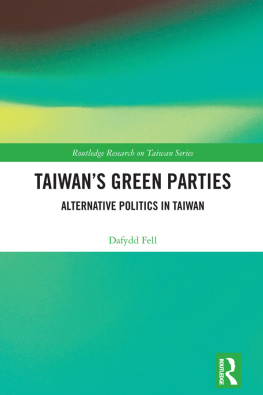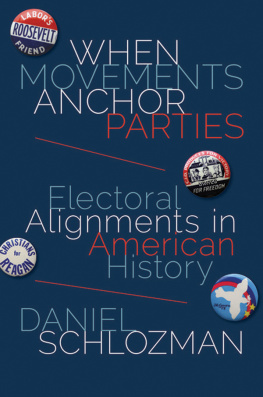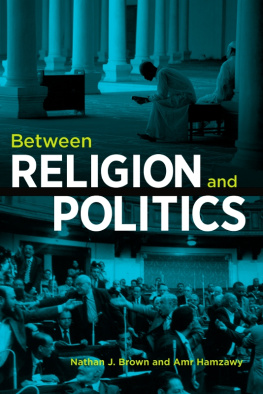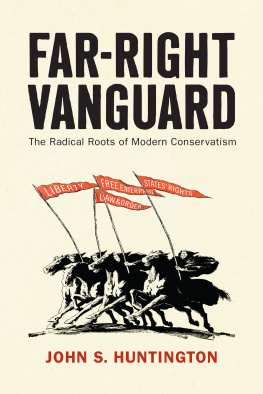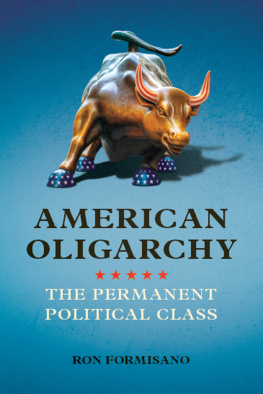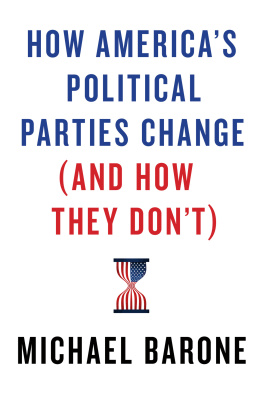The Tea Party
THE TEA PARTY
RONALD P. FORMISANO
A BRIEF HISTORY

2012 The Johns Hopkins University Press
All rights reserved. Published 2012
Printed in the United States of America on acid-free paper
9 8 7 6 5 4 3 2 1
The Johns Hopkins University Press
2715 North Charles Street
Baltimore, Maryland 21218-4363
www.press.jhu.edu
Library of Congress Cataloging-in-Publication Data
Formisano, Ronald P.
The Tea Party: a brief history / Ronald P. Formisano. p. cm.
Includes bibliographical references and index.
ISBN-13: 978-1-4214-0596-4 (hdbk.: alk. paper)
ISBN-13: 978-1-4214-0610-7 (electronic)
ISBN-10: 1-4214-0596-2 (hdbk.: alk. paper)
ISBN-10: 1-4214-0610-1 (electronic)
1. Tea Party movement. 2. United StatesPolitics and government2009 I. Title.
JK2391.T43F67 2012
320.520973dc23 2011042885
A catalog record for this book is available from the British Library.
Special discounts are available for bulk purchases of this book.
For more information, please contact Special Sales at 410-516-6936 or specialsales@press.jhu.edu.
The Johns Hopkins University Press uses environmentally friendly book materials, including recycled text paper that is composed of at least 30 percent post-consumer waste, whenever possible.
Contents
Astroturf or Grassroots Populism?
Parties, Anti-Parties, and Populism
The Search for the Rosa Parks Moment
Media and Money
Tea Party Ascendant
Evangelicals and the Tea Party
Constitutional and Biblical Fundamentalism
The Christian Right and Machismo
Libertarian Fundamentalism versus Christian Fundamentalism
Developing Strains in the Alliance
Immediate Precursors of Tea Party Rebellion
Libertarianism with Benefits
Predictions and Assessments
The Roots of the Tea Partys Grassroots
Acknowledgments
THREE FRIENDS SET IN MOTION events that resulted in the writing of this book. Professor Tiziano Bonazzi of the University of Bologna, one of Italys leading historians and theorists of American political culture, invited me to teach a course on Contemporary United States Politics at Bologna during the spring of 2011. When Dr. Robert J. Brugger, acquisitions editor at the Johns Hopkins University Press, learned that the course would have an emphasis on populism and that two weeks would be devoted to the Tea Party, he suggested that I write a short book on the Tea Party. Professor Anna Scacchi, an old friend, invited me to present a lecture on the Tea Party at the University of Padova, and I just kept expanding both the course material and the Padova lecture. Tiz, Bob, and Anna deserve my warmest thanks.
I am grateful also to my Italian and European students at Bologna for their interest in the politics of the United States, their sense of humor, and their willingness to adapt to my non-European teaching style. I hope some of them will enjoy the book.
Thanks also to Tina Hagee and Carol OReilly for technical assistance and to my research assistant Stephen Pickering. I enjoyed working with Martin Schneider, a demanding copy-editor. At a critical time during the summer of 2011 Deborah Bowman of the Chebeague Island Library and Melanie Gustafson and David Scrase provided crucial logistical support when I was flat on my backliterally. So too did Erica Chiquoine Formisano, who had to live under the same cottage roof for many days with an injured and (more than usually) grouchy spouse. Joe Conforti and John Zeugner, friends and fellow historians, read the manuscript at an early stage and provided helpful criticism and encouragement to run with it. Two readers for the Press not only turned in their comments within three days but also did not allow its unfinished state or the rapid schedule to hinder their delivery of constructive criticism. Their comments helped make this a better book. My children, Laura and Matthewwell, they always help just by being who they are.
INTRODUCTION
ON A COLD DECEMBER NIGHT IN 1773 some fifty to sixty men of the town of Boston, supported by virtually the entire community and by many people from surrounding towns, took action that in the space of about three hours changed the course of American history.
For seven and a half years before that episode on the Boston waterfront all the American colonies, but especially Massachusetts, had been at loggerheads with Britain as it sought to reorganize its empire and raise revenue from the mainland colonies. Americans were protesting their lack of representation in Parliament and challenged not only Britains levying of taxes but also Parliaments broader assertions of sovereignty. The cycle of action and reaction that followed the Boston Tea Party led to the Declaration of Independence and the creation of the United Stateseven though Americans did not really celebrate the Boston Tea Party, or even call it that, until the 1820s and 1830s.
In the twenty-first century a right-wing populist movement has arisenno, eruptedinto the public arena and politics of the United States. It complains of high taxes and excessive government spending, and it has taken the name the Tea Party, where Tea stands for Taxed Enough Already. It calls forno, demandslimited government, debt reduction, no higher taxes, and no new spending. It reveres the Constitution, interpreting it as limiting the powers of the federal government, and argues that Congress has far exceeded its rightful boundaries.
It is too early to claim that the Tea Party hasor Tea Parties havechanged history, but the movement has had an enormous impact on the Republican Party, moving its center of gravity far to the right. It has severely constricted the maneuverability of the Obama administration and has shaped, perhaps more than any other current political force, the content of the nations political agenda since 2009. The Tea Party is an umbrella that covers a loose confederation of grassroots groups as well as the corporate-funded offices of dedicated organizers who provide important infrastructure and guidance to the grassroots.
The movements dedicated rank and file will tolerate no politics-as-usual compromise, moderate Republican lawmakers, or negotiation with political adversaries. This inflexibilitygrassroots Tea Party leaders would call it loyalty to principleshas saturated the Republican congressional leadership and determined the positioning of most Republicans seeking national elective office in 2012. The salient fact: some 40 or even 45 percent of Republican primary voters are hard-core, no-compromise Tea Party supporters.
No one reading these pages is likely to be surprised to learn that the Tea Parties have attracted enormous media attention. Books have been written by cheerleaders and critics, newspapers and magazines regularly follow the movements progress along with the cable news networks, and the internet brims with a veritable flood of material, much of it intensely partisan. This book intends to provide basic information about the Tea Partys origins, its significance, and its place in political history.
In our vast country the Tea Parties have attracted a dizzying array of groups and individuals, some of them from the fringes of public life seeking to exploit the Tea Party label. To complicate matters, the movement operates on several levels of activism. Although the brand has attracted and been exploited by free riders seeking publicity or profit, the people who have made a difference are angry and active on the grassroots level. This book aims to sort out the various components, to explore some of the movements contradictions, and to understand it in relation to the powerful strain of historical populism in American political culture.
Next page



